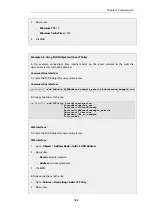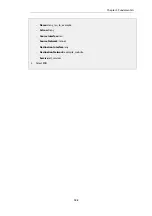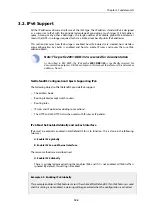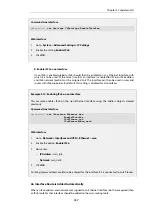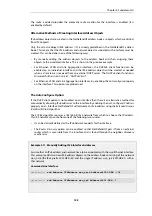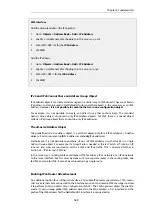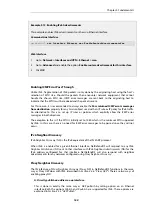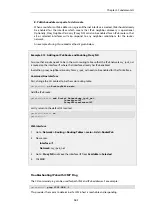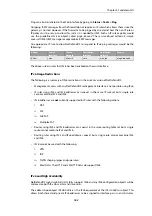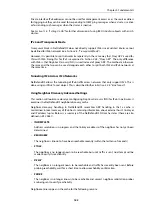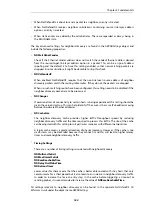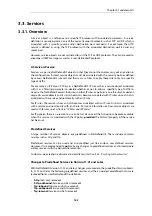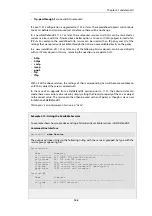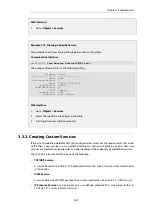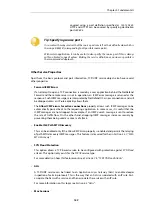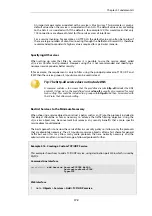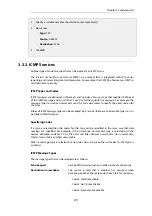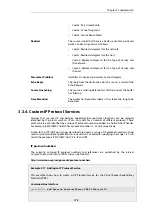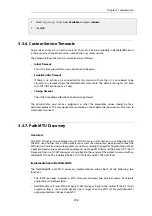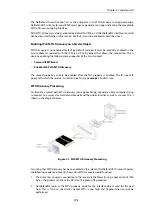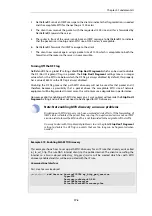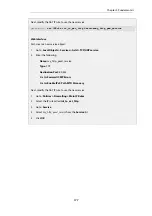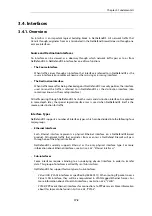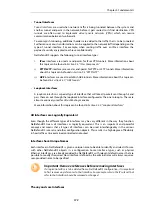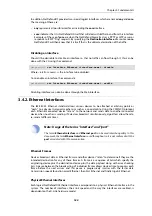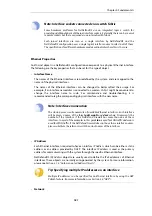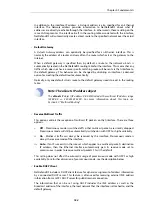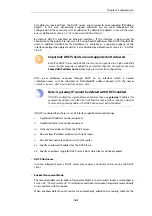
•
Service Group
A service group consisting of a number of services. This is discussed further in
TCP and UDP Based Services
Most applications use TCP and/or UDP as transport protocol for transferring data over IP
networks.
Transmission Control Protocol
(TCP) is a connection-oriented protocol that includes mechanisms
for reliable point to point transmission of data. TCP is used by many common applications where
error-free transfers are mandatory, such as HTTP, FTP and SMTP.
UDP Orientated Applications
For applications where data delivery speed is of greatest importance, for example with streaming
audio and video, the
User Datagram Protocol
(UDP) is the preferred protocol. UDP is
connectionless, provides minimal transmission error recovery, and has a much lower overhead
when compared with TCP. Due to the lower overhead, UDP is also used for some non-streaming
services and in those cases the applications themselves must provide any error recovery
mechanisms.
TCP and UDP Service Definition
To define a TCP or UDP based protocol to NetDefendOS, a
TCP/UDP
service object is used. Apart
from a unique name describing the service, the object contains information about what protocol
(TCP, UDP or both) and what source and destination ports are applicable for the service.
Specifying Port Numbers
Port numbers are specified with all types of services and it is useful to understand how these can
be entered in user interfaces. They can be specified for both the
Source Port
and/or the
Destination Port
of a service in the following ways:
Single Port
For many services, a single destination port is sufficient. For
example, HTTP usually uses destination port
80
. The SMTP
protocol uses port
25
and so on. For these types of service,
the single port number is simply specified in the service
definition as a single number.
Port Ranges
Some services use a range of destination ports. As an
example,
the
NetBIOS
protocol
used
by
Microsoft
Windows™ uses destination ports
137
to
139
.
To define a range of ports in a TCP/UDP service object, the
format
mmm-nnn
is used. A port range is inclusive, meaning
that a range specified as
137-139
covers ports
137
,
138
and
139
.
Multiple Ports and Port Ranges
Multiple ranges or individual ports may also be entered,
separated by commas. This provides the ability to cover a
wide range of ports using only a single TCP/UDP service
object.
For example, all Microsoft Windows networking can be
Chapter 3: Fundamentals
168
Summary of Contents for NetDefendOS
Page 30: ...Figure 1 3 Packet Flow Schematic Part III Chapter 1 NetDefendOS Overview 30 ...
Page 32: ...Chapter 1 NetDefendOS Overview 32 ...
Page 144: ...Chapter 2 Management and Maintenance 144 ...
Page 284: ...Chapter 3 Fundamentals 284 ...
Page 392: ...Chapter 4 Routing 392 ...
Page 419: ... Host 2001 DB8 1 MAC 00 90 12 13 14 15 5 Click OK Chapter 5 DHCP Services 419 ...
Page 420: ...Chapter 5 DHCP Services 420 ...
Page 573: ...Chapter 6 Security Mechanisms 573 ...
Page 607: ...Chapter 7 Address Translation 607 ...
Page 666: ...Chapter 8 User Authentication 666 ...
Page 775: ...Chapter 9 VPN 775 ...
Page 819: ...Chapter 10 Traffic Management 819 ...
Page 842: ...Chapter 11 High Availability 842 ...
Page 866: ...Default Enabled Chapter 13 Advanced Settings 866 ...
Page 879: ...Chapter 13 Advanced Settings 879 ...

